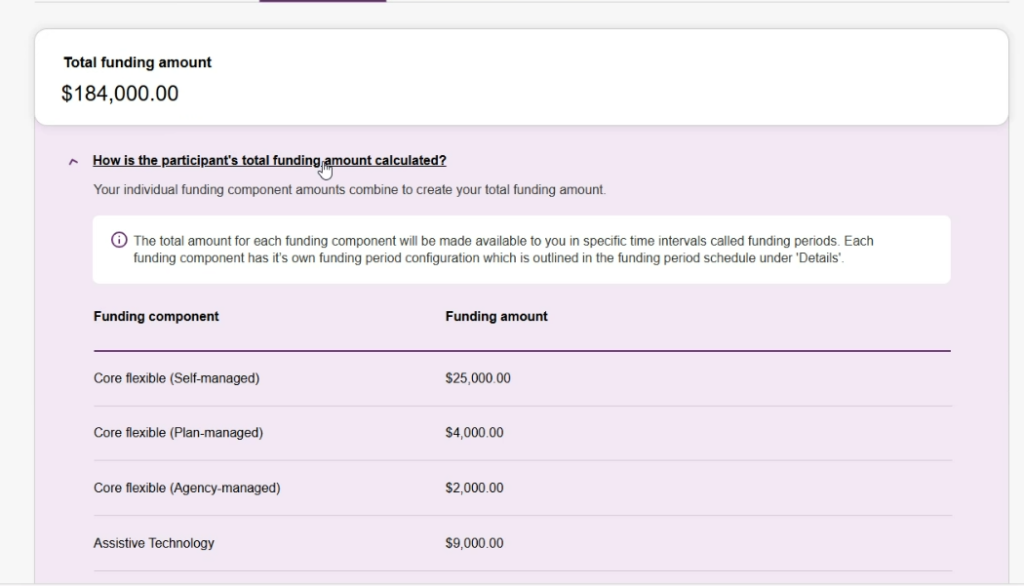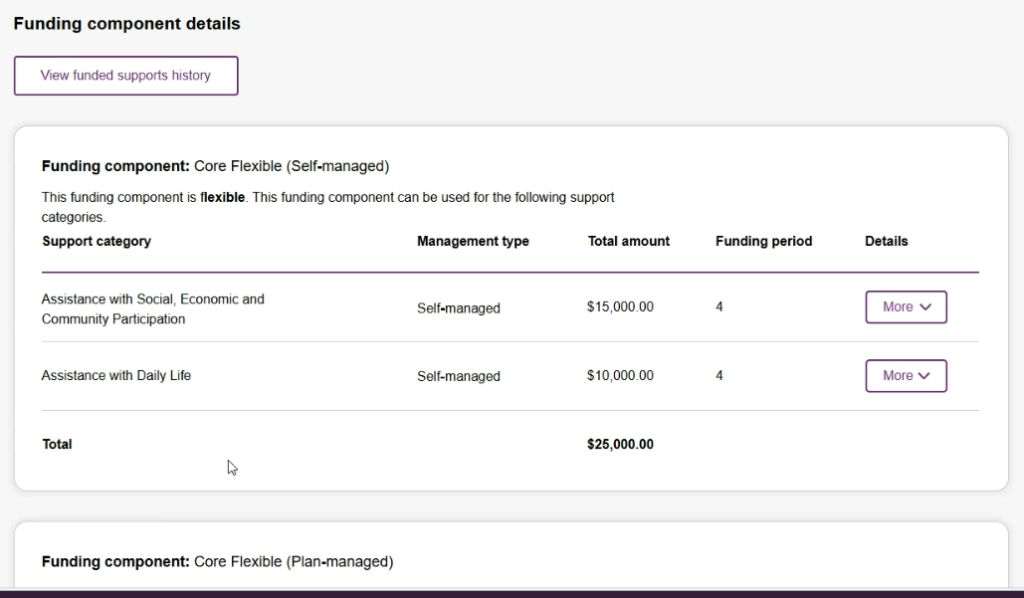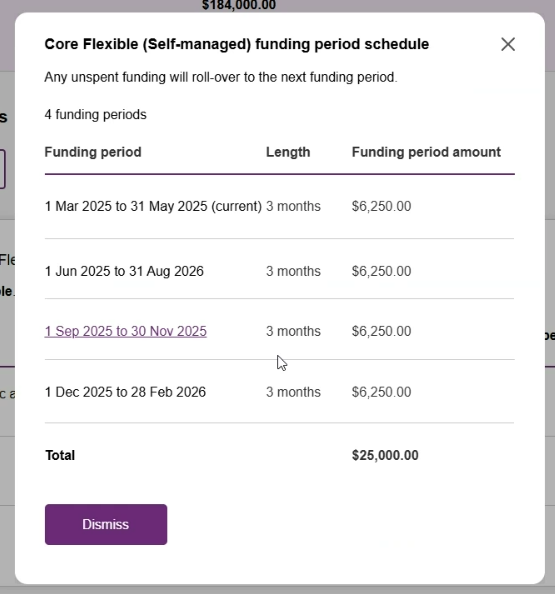
The National Disability Insurance Agency (NDIA) is introducing a significant change to the way participant plans are structured and managed with the introduction of New NDIS PACE Funding Components and Period Changes. Further to the legislation changes announced 3-Oct-24, the NDIS has implemented system changes to support the new legislation. As part of the rollout of the new PACE system updates—set to be implemented for all new and reassessed plans from 17-May-2025—NDIS participants will notice a more structured and transparent approach to their funding, centered around Funding Components and Funding Periods.
What are the NDIS PACE Funding Components and Period Changes?
Under the existing NDIS model, plan funding is typically shown as a lump sum allocated across various support categories. With the PACE rollout, that structure is being refined to include:
1. Total Funding Amount
This is the complete budget allocated to a participant over the life of their plan, just as it has always been.

2. Funding Component Amounts
This is where things start to shift. The total funding will now be broken down into components—essentially, defined segments of funding tied to specific support types or goals. This breakdown is designed to:
- Provide more visibility and clarity on how funds are allocated
- Make it easier to align supports with the participant’s stated goals
- Support more effective budget tracking over time

3. Funding Periods
One of the most impactful updates is the introduction of Funding Periods. These are defined timeframes (usually up to 12 months) that segment how funding components are distributed across the plan’s duration. This means:
- Each funding component will have a start and end period (e.g., monthly, quarterly, biannual, or annual segments)
- Funds will be released based on the funding periods with any unused funds within the period being rolled over
- There is less risk of under- or over-utilising the budget without early detection
The Funding Periods system encourages regular plan reviews, fosters more timely interventions when issues arise, and promotes greater accountability for how supports are delivered and used.

Why These Changes Matter
For participants:
- You’ll have clearer insight into your budget and when to use specific funds.
- It encourages ongoing engagement with your plan and support team.
- It can lead to more timely support, as funding is released in structured intervals.
For providers and plan managers:
- It’s crucial to understand the new structure to invoice accurately (plan managed, self-managed or agency managed) and monitor budget consumption across multiple periods.
- Providers will need to ensure service delivery aligns with the timing and scope of the defined components.

What Should You Do to Prepare?
- Participants: Speak with your support coordinator or plan manager to understand how your plan will be structured under PACE and how to plan ahead for funding periods.
- Providers: Ensure staff are trained on the new terminology and structures so they can support clients effectively and adjust internal billing processes.
Final Thoughts
The introduction of Funding Components and Funding Periods is designed to make NDIS plans more predictable, trackable, and aligned with each participant’s goals. While it represents a shift in how funding is managed, it also offers new opportunities for proactive planning and better outcomes.
As always, staying informed and engaged is key—speak with your NDIS contact to ensure you’re ready for these changes as they roll out in June 2025.
Need Help automating your NDIS organisation? Let Us Help
NDIS providers are tasked with upholding a great quality of care for their clients. And Brevity Care is there each step of the way. Brevity Care software was built from the ground up to be an NDIS-specific tool that empowers NDIS providers to streamline their business operations.
To speak to our consultants, contact us here.



